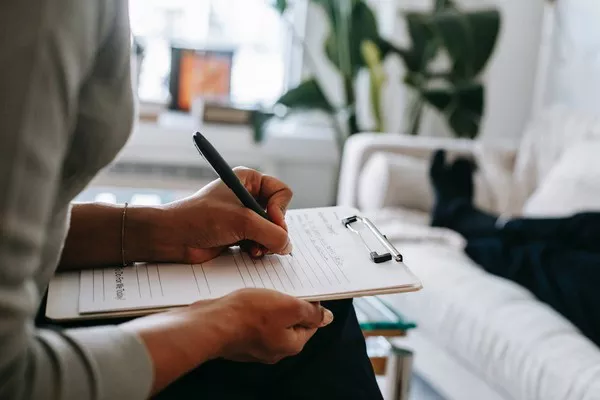Anxiety can be a challenging experience, especially when you are at home. The comfort of your own space can sometimes make anxiety feel even more intense. However, there are many effective strategies you can use to cope with anxiety in the home environment. This guide will provide you with practical techniques, insights, and tips to help manage anxiety and promote a sense of calm and well-being.
Understanding Anxiety
What is Anxiety?
Anxiety is a natural response to stress. It is a feeling of worry, fear, or apprehension about what is to come. Everyone experiences anxiety at some point in their lives. It can be a normal reaction to stressful situations, such as preparing for a big exam, giving a presentation, or facing a job interview. However, when anxiety becomes excessive or chronic, it can interfere with daily life.
Symptoms of Anxiety
Anxiety can manifest in various ways, and symptoms can differ from person to person. Common symptoms include:
Emotional Symptoms:
- Persistent worry or fear
- Feelings of restlessness or being on edge
- Irritability or mood swings
- Difficulty concentrating
Physical Symptoms:
- Rapid heartbeat
- Sweating
- Trembling or shaking
- Fatigue
- Sleep disturbances (insomnia or excessive sleeping)
Types of Anxiety Disorders
There are several types of anxiety disorders, including:
Generalized Anxiety Disorder (GAD): Excessive worry about various aspects of life.
Panic Disorder: Recurrent panic attacks that include intense fear and physical symptoms.
Social Anxiety Disorder: Fear of social situations due to the fear of being judged or embarrassed.
Specific Phobias: Intense fear of specific objects or situations, such as heights or spiders.
Obsessive-Compulsive Disorder (OCD): Involves unwanted repetitive thoughts and behaviors to alleviate anxiety.
Recognizing Anxiety Triggers at Home
Before you can effectively cope with anxiety, it is helpful to identify what triggers your anxiety at home. Common triggers may include:
Isolation: Spending too much time alone can lead to increased anxiety.
Disorganization: A cluttered environment can create feelings of chaos and overwhelm.
Negative Thoughts: Patterns of negative thinking can fuel anxiety.
- Stressful Situations: Family conflicts, financial worries, or work-related stress can trigger anxiety.
Keeping a Journal
One effective way to identify your triggers is by keeping a journal. Write down your feelings, thoughts, and situations that make you anxious. Over time, you may notice patterns that can help you understand what specifically triggers your anxiety at home.
Coping Strategies for Anxiety at Home
Here are several practical strategies to help you cope with anxiety while at home:
1. Create a Calming Environment
Your home environment plays a significant role in how you feel. Creating a calming space can help reduce anxiety. Here are some tips:
Declutter Your Space: A tidy environment can promote a sense of calm. Spend some time organizing your living space. Remove items that create visual clutter.
Use Calming Colors: Consider painting your walls in soft, calming colors like light blue or green. These colors can create a peaceful atmosphere.
Add Plants: Indoor plants can improve air quality and create a soothing environment. Consider adding low-maintenance plants like succulents or peace lilies.
Create a Relaxation Corner: Set up a designated space in your home for relaxation. This could include comfortable seating, soft lighting, and items that promote calmness, such as candles or essential oils.
2. Establish a Routine
Having a daily routine can provide structure and predictability, which can be comforting when dealing with anxiety. Here’s how to establish a routine:
Set Regular Wake-Up and Bedtimes: Consistent sleep patterns can improve your overall mood and reduce anxiety. Aim for 7-9 hours of sleep each night.
Plan Daily Activities: Create a schedule that includes work, relaxation, and self-care activities. Having a plan can help you feel more in control.
Incorporate Breaks: Schedule short breaks throughout your day to recharge and relax. Use this time to practice deep breathing or take a short walk.
3. Practice Mindfulness and Meditation
Mindfulness and meditation are powerful tools for managing anxiety. They can help you stay present and reduce racing thoughts. Here are some techniques to try:
Mindful Breathing: Focus on your breath. Inhale deeply through your nose, hold for a moment, and exhale slowly through your mouth. Repeat this for several minutes.
Body Scan Meditation: Lie down comfortably and mentally scan your body from head to toe. Notice any tension and consciously relax those areas.
Guided Meditation: Use apps or online videos to follow guided meditation sessions. These can help you focus and relax.
4. Engage in Physical Activity
Regular physical activity is a natural way to reduce anxiety. Exercise releases endorphins, which can improve your mood. Here are some ways to incorporate physical activity into your routine:
Go for a Walk: Take a walk around your neighborhood or in a nearby park. Walking can clear your mind and reduce anxiety.
Try Home Workouts: There are many online resources for home workouts, including yoga, pilates, and strength training. Find a routine that you enjoy.
Dance: Put on your favorite music and dance around your living room. Dancing can be a fun way to relieve stress.
5. Limit Exposure to Stressors
Sometimes, it is necessary to limit exposure to stressors that contribute to anxiety. Here are some strategies:
Reduce News Consumption: Constant news updates can increase anxiety. Limit your news intake to once or twice a day.
Set Boundaries with Technology: Take breaks from social media and technology. Consider setting specific times to check your devices.
Avoid Toxic Relationships: Surround yourself with supportive people. If certain relationships increase your anxiety, consider setting boundaries or limiting contact.
6. Practice Self-Care
Self-care is essential for managing anxiety. Taking time for yourself can help you recharge and feel better. Here are some self-care practices:
Engage in Hobbies: Spend time doing activities you enjoy, such as reading, painting, or gardening. Hobbies can provide a sense of accomplishment and joy.
Take Relaxing Baths: A warm bath can be soothing. Consider adding Epsom salts or essential oils for added relaxation.
Prioritize Sleep: Create a bedtime routine that promotes relaxation. Avoid screens before bed and consider reading or listening to calming music.
7. Challenge Negative Thoughts
Anxiety often involves negative thinking patterns. Learning to challenge these thoughts can help reduce anxiety. Here’s how to do it:
Identify Negative Thoughts: Pay attention to your thoughts when you feel anxious. Write them down to recognize patterns.
Evaluate the Evidence: Ask yourself if there is evidence to support these thoughts. Are they based on facts or assumptions?
Reframe Your Thoughts: Replace negative thoughts with more balanced, realistic ones. For example, if you think, “I will fail,” reframe it to, “I will do my best, and that is enough.”
8. Use Grounding Techniques
Grounding techniques can help you stay present and reduce feelings of anxiety. Here are some effective methods:
5-4-3-2-1 Technique: This technique involves using your senses to ground yourself. Identify:
5 things you can see
4 things you can touch
3 things you can hear
2 things you can smell
1 thing you can taste
Focus on Your Feet: Stand or sit comfortably and focus on the sensation of your feet on the ground. Imagine roots growing from your feet into the earth.
9. Connect with Others
Social connections are important for mental health. Even if you are at home, there are ways to connect with others:
Reach Out to Friends and Family: Call or video chat with loved ones. Sharing your feelings can provide support and comfort.
Join Online Communities: Consider joining online forums or groups related to your interests. Connecting with others who share similar experiences can be helpful.
Participate in Virtual Events: Attend virtual classes, workshops, or social events. Engaging with others can reduce feelings of isolation.
10. Seek Professional Help
If anxiety becomes overwhelming or persistent, seeking professional help is crucial. A mental health professional can provide support and guidance. Here are some options:
Therapy: Cognitive-behavioral therapy (CBT) is effective for treating anxiety. A therapist can help you identify negative thought patterns and develop coping strategies.
Medication: In some cases, medication may be necessary to manage anxiety symptoms. Consult with a psychiatrist or primary care doctor to discuss options.
Support Groups: Joining a support group can provide a sense of community and understanding. Sharing experiences with others can be comforting.
11. Develop a Safety Plan
If you experience severe anxiety, creating a safety plan can help. Here’s how to develop one:
Identify Warning Signs: Recognize the signs that your anxiety is escalating. This could include increased racing thoughts or physical symptoms.
Develop Coping Strategies: List specific coping strategies that help you feel safe and grounded. This could include deep breathing exercises or reaching out to a friend.
Reach Out for Help: Include emergency contacts in your safety plan. Know who to call if you need immediate support.
12. Celebrate Small Victories
Managing anxiety is a journey, and it’s important to celebrate your progress. Here’s how to acknowledge your achievements:
Keep a Journal: Write down your successes, no matter how small. Reflecting on your progress can boost your confidence.
Reward Yourself: Treat yourself for reaching milestones. This could be as simple as enjoying a favorite snack or taking time for a relaxing activity.
Practice Gratitude: Regularly express gratitude for the positive aspects of your life. Focus on what you are thankful for, even on challenging days.
13. Stay Committed to Your Journey
Coping with anxiety is an ongoing process. Stay committed to your journey by:
Continuing Education: Keep learning about anxiety and coping strategies. Stay informed about new resources and techniques.
Reassessing Goals: Periodically reassess your goals and coping strategies. Adjust them as needed to fit your current situation.
Seeking Support: Don’t hesitate to reach out for help when needed. Whether it’s a therapist, support group, or trusted friend, having support is essential.
Conclusion
Coping with anxiety at home can be challenging, but it is possible to manage these feelings effectively. By creating a calming environment, establishing a routine, practicing mindfulness, and engaging in self-care, you can improve your mental health and well-being. Remember that you are not alone in this journey. Seek support from friends, family, or professionals when needed. With time, patience, and commitment, you can learn to cope with anxiety and lead a more fulfilling life. Embrace the journey, and take it one step at a time.
Related topics:



















